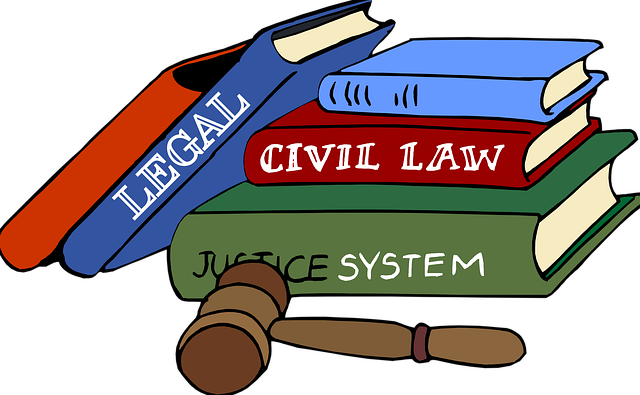The Oregon Child Welfare Court system protects vulnerable children through meticulous procedures, ensuring their safety and promoting positive family outcomes. Key stakeholders—families, social workers, and lawyers—need a comprehensive guide to navigate these processes, from initial investigations to permanent placements. Understanding court procedures ensures fairness, collaboration, and secure futures for Oregon's youth. The Oregon child welfare court guide offers vital insights into the legal process, helping professionals effectively engage with the system.
“Uncovering the Intricacies of Oregon Child Welfare Court: A Comprehensive Guide
Oregon’s child welfare court system plays a pivotal role in protecting and nurturing vulnerable children within the state. This in-depth article serves as your ultimate guide to navigating the complex court procedures, offering critical insights into every stage of the process. From jurisdiction and key players to initiating cases, pre-trial steps, evidence presentation, and appeals, we demystify the court’s functions. Gaining a solid understanding of these procedures is essential for all involved in ensuring the best outcomes for Oregon’s youth.”
- Understanding Oregon's Child Welfare Court Jurisdiction and Scope
- Key Players Involved in the Oregon Child Welfare Court Process
- Initiating the Case: Petitions and Initial Filings Explained
- Pre-Trial Procedures and Hearings: A Step-by-Step Guide
- Presenting Evidence and Legal Arguments: What to Expect
- Post-Trial Outcomes and Appeals: Navigating the Final Stages
Understanding Oregon's Child Welfare Court Jurisdiction and Scope

Oregon’s Child Welfare Court plays a pivotal role in safeguarding the well-being and interests of vulnerable children within the state. Its jurisdiction encompasses cases involving child abuse, neglect, and dependence, ensuring that minors receive the necessary protection and support. The court procedures in Oregon are designed to be comprehensive yet sensitive, aiming to guide families towards positive outcomes while prioritizing the child’s best interests.
Navigating these court processes requires a detailed understanding of the legal framework. A child welfare court guide is essential for all involved parties, offering insights into the various stages, from initial investigations and hearings to case plans and permanent placements. By familiarizing themselves with these procedures, families, social workers, and legal professionals can actively participate, ensure fairness, and work collaboratively towards a secure future for Oregon’s young people.
Key Players Involved in the Oregon Child Welfare Court Process

The Oregon child welfare court process involves several key players who work together to ensure the best outcome for involved families and children. At the forefront are the child welfare workers from the Department of Human Services (DHS), who initiate proceedings by filing a petition with the court based on their assessment of a family’s situation. These professionals play a crucial role in gathering evidence, assessing risks, and developing plans to promote the safety and well-being of children.
Other vital participants include attorneys representing both the child and the parents or guardians. Court appointed special advocates (CASAs) also contribute significantly by providing independent support and advocacy for the child’s best interests. Judges, mediators, and social workers further facilitate the process by interpreting laws, guiding discussions, and making informed decisions based on the evidence presented during court proceedings. Understanding these court procedural insights is essential for navigating the Oregon child welfare court guide effectively.
Initiating the Case: Petitions and Initial Filings Explained

In Oregon, child welfare cases begin with a petition, which is a formal written request to the court seeking intervention and protection for a minor. This document outlines the specific allegations concerning the child’s well-being and safety within their home environment. It is drafted by a qualified individual, such as a social worker or attorney, who has direct knowledge of the situation and presents compelling evidence to support the claims. The petition sets in motion the court procedures in Oregon’s child welfare system, triggering an investigation to gather further information and assess the validity of the allegations.
Navigating court procedures requires understanding that initial filings also include supporting documents, such as case notes, medical records, and interviews with key individuals involved. These provide a comprehensive overview of the family’s circumstances and the child’s needs. Once filed, the petition is reviewed by a judge who determines whether there is sufficient cause to proceed and issues an order for temporary protection, if necessary. This initial phase is crucial in ensuring the court has jurisdiction and that the child’s immediate safety is addressed while the case progresses through the Oregon child welfare court system.
Pre-Trial Procedures and Hearings: A Step-by-Step Guide

In Oregon, child welfare courts follow a structured set of pre-trial procedures designed to ensure fairness and efficiency. The process begins with an intake and assessment, where the court receives reports detailing the circumstances leading to the child’s removal or placement in foster care. This is followed by a preliminary hearing, typically conducted within 72 hours of the child’s removal, to determine immediate safety and appropriateness of temporary placement.
Key steps include: (1) service of petition on all parties involved; (2) scheduling and conducting initial hearings where basic information is gathered; (3) ordering necessary assessments, such as mental health or substance abuse evaluations; (4) setting timelines for filing responses and evidence; and (5) preparing for a pre-trial conference. Understanding these court procedures is crucial for navigating the Oregon child welfare court system effectively.
Presenting Evidence and Legal Arguments: What to Expect

When presenting evidence and legal arguments in an Oregon child welfare court, parties involved should anticipate a structured process designed to ensure fairness and justice for all children. The court procedures in Oregon are guided by strict rules and regulations aimed at protecting the rights of minors while prioritizing their well-being. This involves meticulous preparation, where both sides compile relevant documents, expert testimonies, and other forms of evidence to support their respective cases.
In this context, understanding the court process is crucial for navigating the complexities of child welfare cases. Legal arguments should be well-articulated, grounded in applicable laws, and focused on demonstrating how the presented evidence aligns with the best interests of the child. The court expects clear, concise, and compelling presentations from all parties, ensuring a thorough analysis of each issue before making decisions that significantly impact a child’s future.
Post-Trial Outcomes and Appeals: Navigating the Final Stages

After a trial in an Oregon child welfare court, the judge will issue a decision based on the evidence and legal arguments presented. This can result in various outcomes, which are crucial for all parties involved, especially children and their families. One possible outcome is that the judge may return the child to their parents or guardians with specific conditions and monitoring. Alternatively, they might place the child in permanent custody with a relative or foster family, a decision that often requires a thorough analysis of the child’s best interests.
Navigating these final stages involves understanding the appeals process, which allows for further review of the case if either party disagrees with the outcome. This process is designed to ensure fairness and provide an opportunity to present new evidence or legal arguments. It’s essential for those involved in Oregon child welfare court proceedings to have a comprehensive guide to court procedures, offering insights into potential outcomes and the steps needed to appeal, thereby fostering a better understanding of the entire court process.
